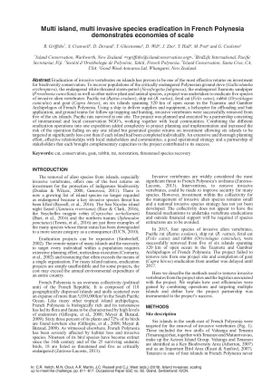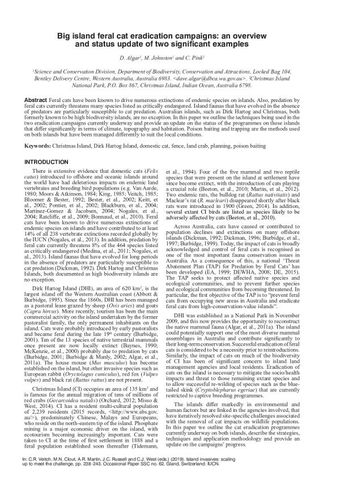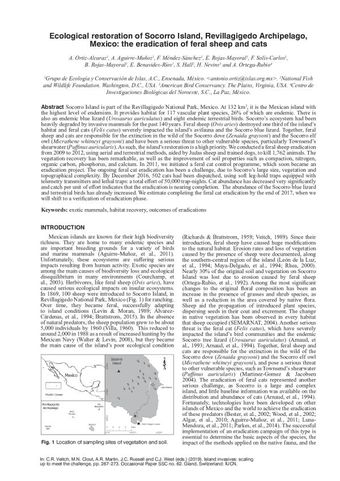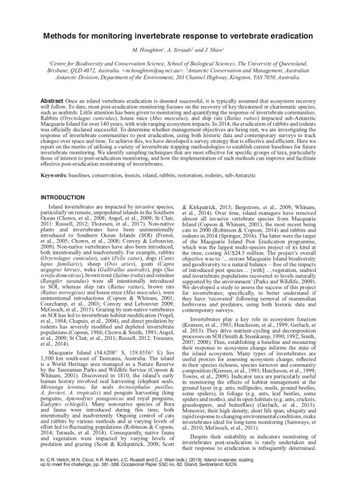Multi island, multi invasive species eradication in French Polynesia demonstrates economies of scale
- Description:
- Eradication of invasive vertebrates on islands has proven to be one of the most effective returns on investment for biodiversity conservation. To recover populations of the critically endangered Polynesian ground dove (Gallicolumba erythroptera), the endangered white-throated storm-petrel (Nesofregetta fuliginosa), the endangered Tuamotu sandpiper (Prosobonia cancellata) as well as other native plant and animal species, a project was undertaken to eradicate five species of invasive alien vertebrates: Pacific rat (Rattus exulans), ship rat (R. rattus), feral cat (Felis catus), rabbit (Oryctolagus cuniculus) and goat (Capra hircus), on six islands spanning 320 km of open ocean in the Tuamotu and Gambier Archipelagos of French Polynesia. Using a ship to deliver supplies and equipment, a helicopter for offloading and bait application, and ground teams for follow up trapping and hunting, invasive vertebrates were successfully removed from five of the six islands. Pacific rats survived at one site. The project was planned and executed by a partnership consisting of international and local conservation NGOs, working together with local communities. Combining the different eradication operations into one expedition added complexity to project planning and implementation and increased the risk of the operation failing on any one island but generated greater returns on investment allowing six islands to be targeted at significantly less cost than if each island had been completed individually. An extensive and thorough planning effort, effective relationships with local stakeholders and communities, a good operational strategy and a partnership of stakeholders that each brought complementary capacities to the project contributed to its success.
- Display date:
- 2019
- Collections:
- Secretariat of the Pacific Regional Environment Programme (SPREP)
- Publisher:
- International Union for Nature Conservation (IUCN)
- Content partner:
- Secretariat of the Pacific Regional Environment Programme (SPREP)
- Availability:
- Not specified
-
Copyright status: All rights reservedFind out more about what you are able to do with this itemThis item is all rights reserved, with means you'll have to get permission from Secretariat of the Pacific Regional Environment Programme (SPREP) before using it. For more information, please see our use and reuse page.What can I do with this item?Non-infringing useNZ copyright law does not prevent every use of a copyright work, and this item may be hosted by an international institute or organisation. You should consider what you can and cannot do with a copyright work.No sharingYou may not copy and/or share this item with others without further permission. This includes posting it on your blog, using it in a presentation, or any other public use.No modifyingYou are not allowed to adapt or remix this item into any other works.No commercial useYou may not use this item commercially.
Related items
Welcome and warm Pasifik greetings
The information on this site has been gathered from our content partners.
The names, terms, and labels that we present on the site may contain images or voices of deceased persons and may also reflect the bias, norms, and perspective of the period of time in which they were created. We accept that these may not be appropriate today.
If you have any concerns or questions about an item, please contact us.



